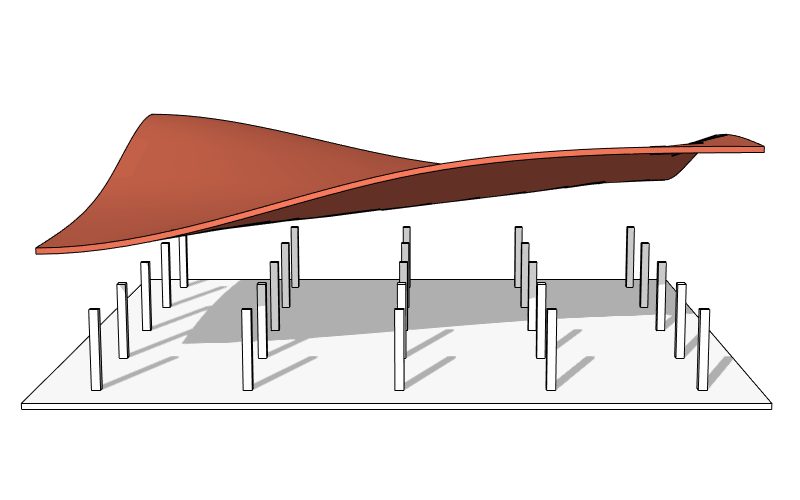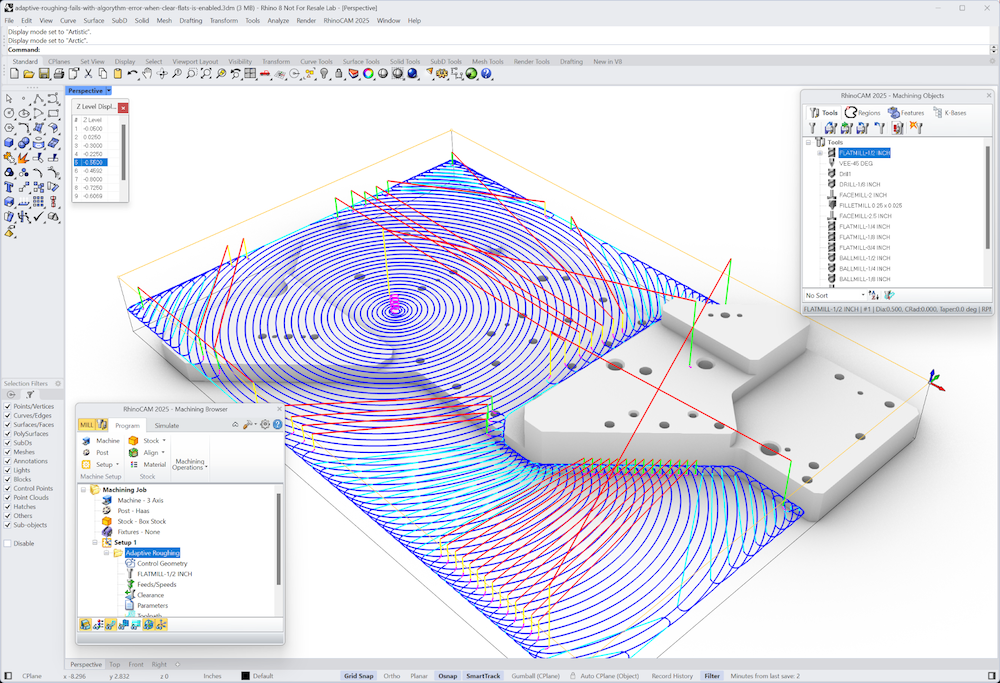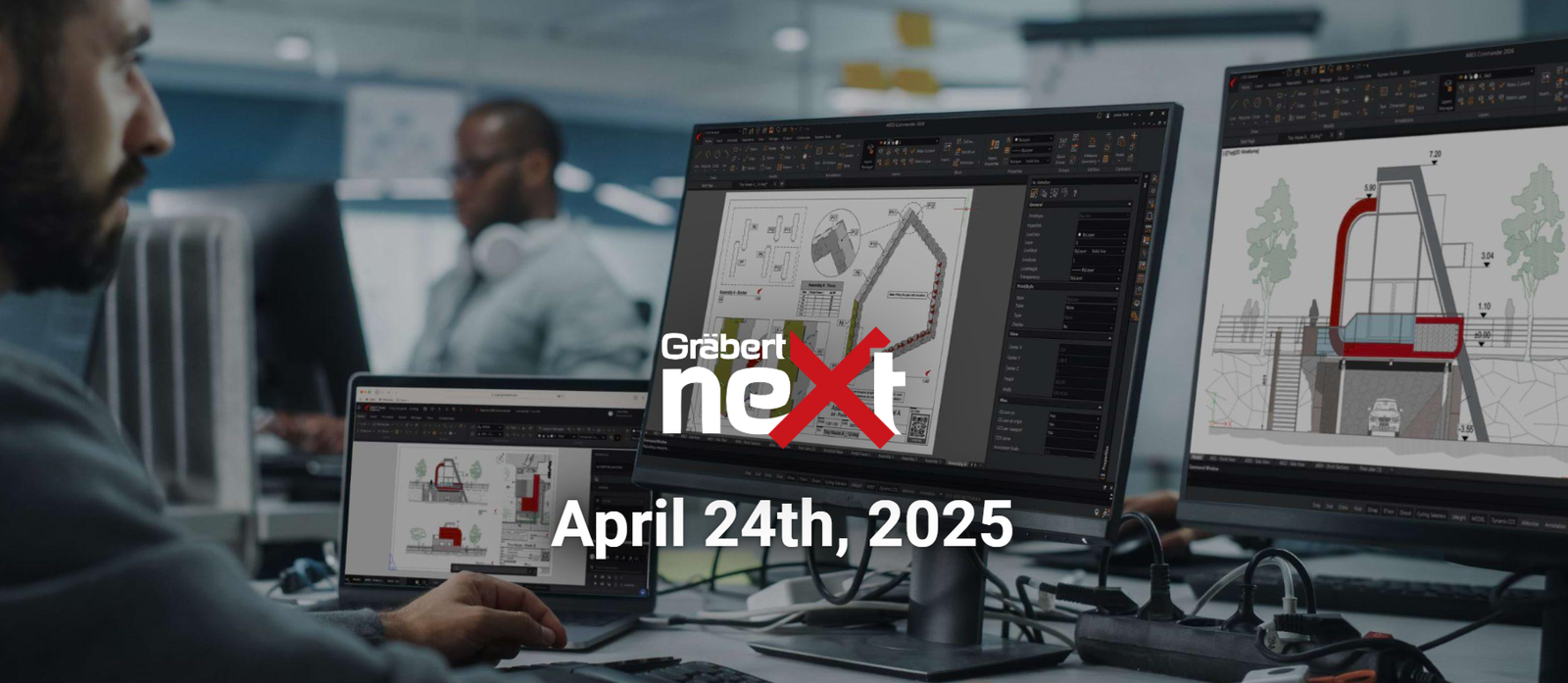Your Cart is Empty
Customer Testimonials
-
"Great customer service. The folks at Novedge were super helpful in navigating a somewhat complicated order including software upgrades and serial numbers in various stages of inactivity. They were friendly and helpful throughout the process.."
Ruben Ruckmark
"Quick & very helpful. We have been using Novedge for years and are very happy with their quick service when we need to make a purchase and excellent support resolving any issues."
Will Woodson
"Scott is the best. He reminds me about subscriptions dates, guides me in the correct direction for updates. He always responds promptly to me. He is literally the reason I continue to work with Novedge and will do so in the future."
Edward Mchugh
"Calvin Lok is “the man”. After my purchase of Sketchup 2021, he called me and provided step-by-step instructions to ease me through difficulties I was having with the setup of my new software."
Mike Borzage
An Interview with Brad Peebler, CEO of Luxology (modo)
June 20, 2007 8 min read

Brad Peebler is the CEO of Luxology, the company that makes modo. Luxology modo is based on a technology called polygon/surface subdivision that is changes the way 3D artists and designers create shapes and frees their creativity. Some of the ideas and technologies powering Luxology modo will have a significant impact behind the DCC (Digital Content Creation) area. I’m referring especially to clumsy surface modelers where the mathematical model can become an obstacle for the user’s creativity. To get an expert opinion on this and several other topics, I asked Brad a few questions. Here is the interview.
Brad, can you tell us a bit about yourself and your company?
we wanted to create software that offered a new level of speed and control to designers and artists
Yes, Luxology was formed almost exactly five years ago by three people, namely Allen Hastings, Stuart Ferguson and me. Our dream was to write from scratch a new 3D software that leveraged everything we knew from our history with Lightwave 3D and from our own long history of producing 3D content for commercial and personal projects. We wanted to create software that offered a new level of speed and control to designers and artists of all kinds. And we wanted to take full advantage of modern hardware – GPUs and multi-core CPUs for example – that simply did not exist in today’s form back when other software products like Rhino or 3ds Max were architected.
A few key people in your company were previously involved with LightWave. Considering this relationship with NewTek, what makes modo different from LightWave from the end user point of view?
Indeed, the founders all came from NewTek, and we are a very experienced team. However, when we built up our team we went out and found talent from many other places. We have people who worked in film, people who were creating various 3rd party applications and people from the gaming market for example. We even hired Bob Bennett who used to be the General Manager of Maya for Alias. We wanted many different perspectives internally. The goal was to create a software product that had a plastic – and even fluid user interface – which the designer could mold as he or she accomplished different tasks. A user interface that is as malleable as the content being created in the product if you will. The idea being that if we really focused on workflow artists would be able to create more compelling (and just more) content. We nailed that.
And we wanted to create a pragmatic tool, not a theoretical tool. We wanted to build a tool that simply works as expected and let you model anything you want, not just a certain class of objects. Double click on an edge loop in modo and the entire loop is selected. Type in4*2mm in a units field and the software knows you want 8mm. Simple stuff really. But to make things “just work” means that a lot of that has to go into the software beyond “making it work”.
So we have spent a huge amount of time on making the software operate as fluidly as possible from a designer’s standpoint. You can literally mold the user interface to exactly what you need at any given time. An interesting benefit to this is that we can “harvest” these configs from willing “early adopters” to help us continually provide the most effective, efficient workflow in our defaults for those artists who just want to open the app and get moving.
modo is based on a powerful polygon/surface subdivision modeler. Can you explain what are the benefits for the user compared to traditional modelers?
modo is a tool that lets people create high quality models with a minimum of fuss
We think modo offers a unique combination of tools that really encourages a designer to experiment and come up with interesting alternatives. modo leverages several other technologies like rendering and painting to provide a richer result. Basically, modo is a tool that lets people create high quality models with a minimum of fuss. modo 101 was the first version we shipped – it was a tight and focused modeler that sprang to life on the screen moments after you double clicked the icon. In May of 2006 we shipped modo 201 which was a huge new release of modo. The amount of functionality that was added to modo in that new release was amazing. modo suddenly grew into an application that provides modeling, painting and rendering in a wonderful combination. modo 201 was followed by two updates (202 and recently 203). The modo 203 (March 2007) added new UV editing tools, faster rendering and a new DXF import/export capability to modo, and it is free to existing customers. Now we are previewing modo 301. modo 301 continues our focus on modeling and workflow but also network rendering, basic animation and sculpting to the product.
modo is offering a powerful and yet friendly user interface. Based on your experience, is there any reason the user interface has been a neglected feature in so many other 3D software systems?
a lot of 3D software is a just a big bag of features
For many many years, the focus of software developers has been on getting stuff to work. 3D is hard stuff to code! Much of what you see in today’s tools is a result of pure research and development efforts. That is advancing the underlying technologies and algorithms of rendering, subdivision surfaces and so forth. There simply was not as much attention on how the software felt to use as a designer. A lot of 3D software – even today – is a just a big bag of features. We think modo is more than that. It is software that is enjoyable to use and rewards you for your time. We constantly hear from users that they actually want to spend time in modo.
Some of the technologies you developed for modo — such as the polygon/surface subdivision — appear to have a larger potential than DCC (Digital Content Creation). Do you expect to see those technologies being adopted by the more traditional CAD systems?
subdivision surfaces are now getting a lot of attention in the design world. Even CATIA offers a SubD modeler now!
Absolutely, after years of use in the DCC space, subdivision surfaces are now getting a lot of attention in the design world. Even CATIA offers a SubD modeler now! We have a number of high profile users of modo in consumer product design and automotive that are seeing the advantages in having a modeler that can quickly create such a wide range of shapes with a minimum of fuss. A little story: we created a tutorial on how to build a sports shoe a few months back. That one model has resulted in huge attention from the design community. A typical response we hear is “we did not know that Subdivision surfaces could produce a model of that quality.” And when they find out how easy modo is to get results from, that really gets the interest up even further.
Subdivision surfaces have actually been around for a really long time. I believe Symbolics was the first to implement them in a commercial product in the late 1980s! Stuart Ferguson made his first SDS implementation in LightWave3D back in the early 1990’s in a tool called “metaform”. Stuart was somewhat a pioneer in that way. Many people did not see the value in SDS at the time as they thought it merely “smoothed” the model in an undesirable manner. It really wasn’t until Pixar began waving the SDS flag that people starting taking this method of modeling seriously over NURBS. Of course, Pixar President Ed Catmull is the father of Catmull-Clark subdivision surfaces.
modo is a new product in a market crowded with several competing systems. In which vertical area does modo excel over its competitors?
our fastest growing markets are 3D package design, architectural visualization and industrial design
Well, we always come back to the superior experience of using modo. We have people tell us that they look for projects to use modo on because it is nice to use. A lot of people use modo at home for personal projects too. We get email from people who are introducing their kids to 3D with modo. Delivering a superior user experience, in turn, requires attention to a lot of details. Object and component selection has to be just right. Navigation needs to have the right feel. We are always trying to make modo work just as you would expect it to. I think that is the main advantage. This means that any business that needs to quickly create a range of alternative designs will benefit from modo. Our fastest growing markets are 3D package design, architectural visualization and industrial design.
From a technical standpoint, we feel our tight integration of the core disciplines sets us apart as well. For instance, being able to have your rendering update as you model or as you paint your mesh is really unique and a huge time saver. There I am back to workflow. You can see how even our hardcore technical implementations (crazy fast, interactive rendering for example) are also about workflow.
modo has a very active and enthusiastic community of users. How does the community of users and their feedback impact the development of the product?
every single Friday we deliver a couple of videos that explain where the software is headed. And then we get detailed feedback on what modo users think about that
I almost answered your previous question with a response about our community — as it is so central to the experience of using modo. If you have a question on how to accomplish something, you can go to the modo forum on our website and get many helpful responses in an hour or two. And that is where we have an ongoing dialog with the community about the development of modo. Right now, for example, we are previewing modo 301. Every single Friday we deliver a couple of videos that explain where the software is headed. And then we get detailed feedback on what modo users think about that. This directly influences how modo is developed. We even ask modo users about business policies – network rendering policies, how the website should be structured, how we should price training. All of these topics and more are openly discussed with our customers on our Forum.
The internet started as a plain text medium that gradually evolved to include HTML, then images, pictures, and videos. Now, with systems like SecondLife, we are witnessing the Internet becoming a full virtual 3D world. Do you see Luxology having a significant role in this coming revolution?
we are part of a large community of designers and artists who are among the best modelers in the world
modo is already used pretty heavily for game development and is able to produce characters, props and environments that are very efficient for real-time rendering. Of course, our high-speed, photo-quality rendering engine doubles as an incredibly powerful texture baking system for real-time. I think the biggest impact we will have on this new era is that we are part of a large community of designers and artists who are among the best modelers in the world. Exactly how this will pan out is not clear but the large talent pool of modo users will surely have its impact. There is a modo community project underway right now to model as many of the aircraft in the San Diego Air & Space Museum as possible prior to having our modo user event there on August 5th. Over 50% of the aircraft in the museum are now being modeled in modo. That gives you an idea of how strong the talent base is. These are the same people who will shape what the Internet evolves into. And they know 3D!
I would like to thank Brad Peebler for sharing his thoughts with me today. I would also like to thank Bob Bennett and Immanuel Martin for arranging the interview for me. If you have any questions for Brad or for Novedge, please leave a comment below and we will be glad to answer.
Franco Folini
Also in NOVEDGE Blog

Enhance Your Designs with VisualARQ 3: Effortless Geometry Extensions for Walls and Columns
April 30, 2025 8 min read
Read More
MecSoft Unveils RhinoCAM 2025 and VisualCAD/CAM 2025 with Enhanced Features
March 08, 2025 5 min read
Read MoreSubscribe
Sign up to get the latest on sales, new releases and more …



